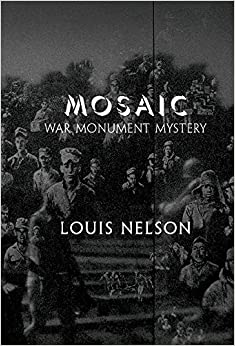Books |
MOSAIC: War Monument Mystery
Louis Nelson
By
Published: Jul 04, 2021
Category:
History
War is, by definition, an indictment of a flaw in the character of nations and human intelligence, a tragedy, a defeat no matter who wins.
Of America’s post-World War II conflicts, the Korean War (1950-1953) has a special distinction: It is almost completely forgotten. Approximately 3 million people died in it, most of them Korean civilians — including an estimated 12 to 15 percent of the North Korean population. Virtually all of the major cities on the entire Korean Peninsula were destroyed. When it ended, the Chinese had been thwarted. Very much worth it for the South Koreans, who have built a dynamic economy. North Korea is the flip side of that story: unfreedom and poverty.
33,739 Americans died in battle. 103,284 were wounded. 7,800 are missing-in-action. Had the war lasted longer, Korea might have seen more Americans die than Vietnam. And it didn’t exactly end. In the decades since the war, more than 3 million Americans have served in Korea.
In 1986, Congress authorized a memorial to America’s soldiers in Korea. In 1990, Louis Nelson was asked to design the mural that was integral to the project. I know him slightly, and I can attest: he contains multitudes. He has a long and distinguished career as an industrial designer, he designed and produced the Dag Hammarskjöld Medal for the United Nations, he’s a deep reader and sharp thinker, and he’s been married for four decades to Judy Collins, which is how I came to know him.
His book is like him; it covers a lot of ground. It is, of course, a history of the five years he spent on the memorial. It’s also a personal memoir — “how this war affected me and its veterans, then and now” — that includes his five years in the Armed Forces, and a meditation on American history. Idiosyncratic? I can’t recall a government-funded project with a sentence like this: “I was a conduit for the spirit to work through me and create a place for millions to spend a few minutes of their time in their days and for the ages to come.”
There are two parts to the memorial, which is located between the Lincoln and Vietnam memorials. One is Nelson’s 164-foot-long mural: 2,000 photographs of men and women who served in Korea. The other is a collaboration with Frank Gaylord: a group of statues, 19 soldiers on patrol. It was decreed that the memorial should show no weapons, so the soldiers wear ponchos to cover their rifles. As Nelson writes, “The wall of faces and the statues of the soldiers, their eyes steady, bold and determined, facing towards the next battle, re-creates the moment and the space — one can almost hear the sound of that time.” It’s a powerful and successful memorial, worthy of a book and Nelson’s musings. [To buy the paperback from Amazon, click here. For the Kindle edition, click here.]


